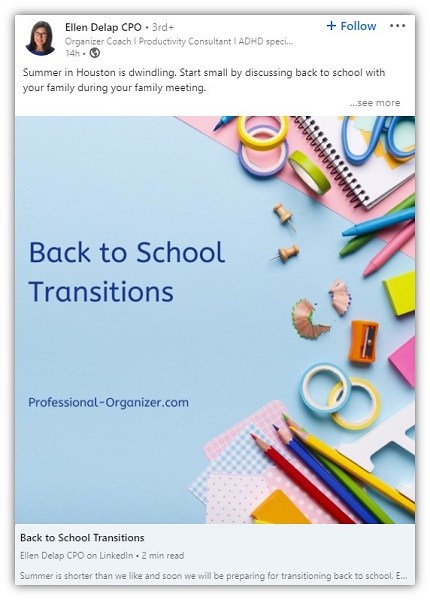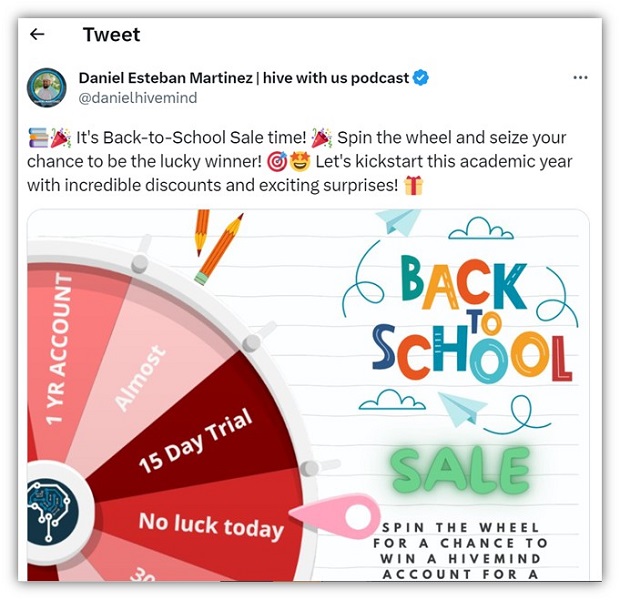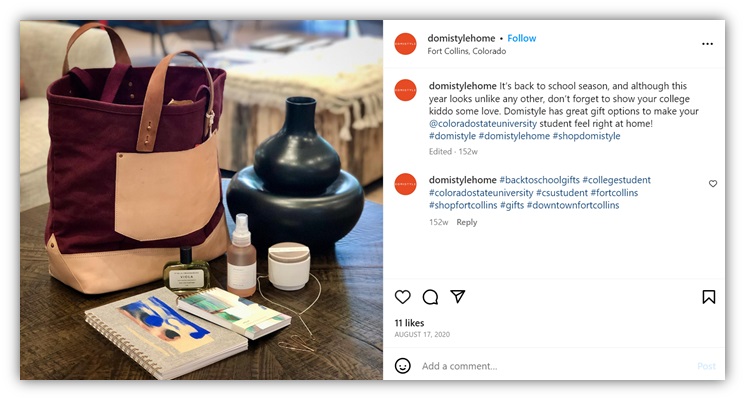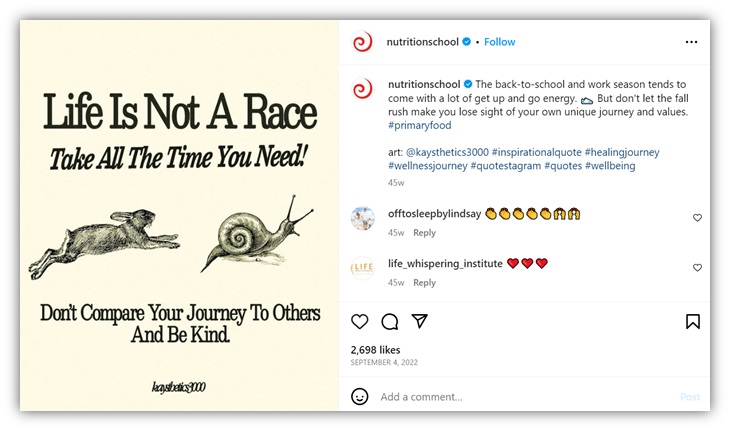PPC
49 Back-to-School Messages for A+ Marketing (With Tips & Examples)

Back to school might be a bittersweet time for students, families, and teachers. Business owners, however, should be jumping for joy. Back to school provides tons of opportunities to promote your business and get out of any summertime lulls. In fact, Americans are estimated to spend $37 billion during the back-to-school season.
That said, you need an “A+” back-to-school message to maximize your marketing success during this busy time of year. A strong back-to-school message can be applied to any of your seasonal campaigns, social media posts promotions, email copy, ad copy, website pages, and more.
Consider class officially in session as I teach you how to make a message that pops with this complete list of back-to-school message ideas.
Table of contents
Back-to-school messaging tips
Regardless of how you might decide to apply the following back-to-school message and slogan ideas, here are a few quick back-to-school marketing tips to keep in mind:
- Keep your back-to-school messages short and sweet. Avoid overthinking how you’ll connect with your audience during this time of year. Your customers are likely busy getting back into a routine, so a clear and concise message is all you need to get your points across.
- Include a call to action whenever possible. Consider the end goals for your marketing messages. If you’re trying to convert more customers, be sure to point that out with powerful call-to-action phrases.
- Always connect back to your value propositions. Whether you’re solving a customer pain point, providing any sale prices or savings, or anything in between, you’ll want your messaging to convey your business’s unique value.
For our next lesson, let’s look at some back-to-school message ideas and examples!
Back-to-school messages any business can use
No matter what niche market you may be in, these back-to-school messages could work for your business:
- [Business name] wishes you and your family a very happy back-to-school season!
- Back to school is bittersweet. Luckily, our seasonal deals are all sweet!
- Class is in session! The first lesson? We’re studying the top ways our business can help you. Check them out below:
- It’s back-to-school season and these customer testimonials prove our business deserves an A+
- Here’s why our top offer gets an A+ from our happy customers:
Back-to-school messages for email
Here are a few back-to-school email templates your business can use:
Thank you
Hi [Name],
We just wanted to say two quick things:
- Happy back-to-school season!
- Thank you for being an A+ customer!
To show our appreciation, here’s a code to access our fall specials early:
Sincerely,
The [Company] Team
Event
[Name], R-YES-V-P to our back to school event!Study up on what you’ll get when you join us for our event:
- Back to school workshops with key tips for managing schedules, studying, and more.
- Exclusive sale prices only for attendees.
- Back to school family fun games like trivia and more.
Register now with the link below:
We hope to see you there!
Warm wishes
Hey [Name],
We just wanted to send some positive back to school vibes your way! Wishing you and your family a very happy back to school season. If you want to learn more about how we can help you make this season great, click here!
Warm wishes,
The [Company] Team

Back-to-school messages for social media
Check out these back-to-school social media captions:
- It’s officially #backtoschoolszn and we’re studying up on what we’re doing great + what you want to see next! So, if you haven’t left a review for us yet, click the link in our bio now!
- Happy #backtoschoolszn 🤓 how are you celebrating? Let us know in the comments below!
- Back to school = back to fun! Tag us in your funniest back-to-school pictures and we’ll reshare the best ones to our story👀
- Back to school = back to giveaways! We’re giving away a secret code for an additional 25% off valid now through September 30 🤑Just reshare this post to your story and tag us to enter. We’ll draw one lucky winner at random tomorrow night on Facebook Live!
- Here’s how our employees celebrate the back-to-school season😂
- Wherever you are in your learning journey, here are some of our top back-to-school tips 🤓

Back-to-school messages for sales
When looking to increase sales during the late summer and early fall months, use back-to-school messages like these below:
- Back to school = back to savings! Shop our back-to-school sale now for A+ prices you won’t want to miss.
- Get back-to-back savings throughout the back-to-school season with our BOGO deal available now through September 30
- Brighten up your back-to-school season with these deals.
- This back-to-school sale has outstanding test results: 100% good prices, 100% free shipping, 100% hassle-free. Shop now!
- We back to school sales. That’s why we’re running an exclusive sale for a limited time now through September 30 just for you! Stop by in-store or shop our website to get A+ deals. Simply use the coupon code: “back2school” at checkout to get all the back-to-school savings you won’t want to miss.

Back-to-school messages for services
Scheduling services during busy times of the year can be a common small business challenge. Get ahead of the game with these back-to-school messages that help you book more services:
- Back to school = back to bookings! And, our appointment slots are filling fast. Be sure not to miss out on getting your spot for a free consultation now.
- Back-to-school appointments are now available! Book now here.
- Back to school may be a busy time, but our flexible hours make it easy for you to stop by for an appointment. Book here!
- ‘Tis the season! With back-to-school underway, don’t put off that project any longer. Learn how our services can help.
- Kids may be going back to school, but you’re due back at our office for your next appointment! Book now here:
Back-to-school messages for students and families
If your target market is students, try these message ideas:
- Back to school… eek! We’re here to help you rip the band-aid off and start off your semester in stride. Click here to learn more about how we make student’s lives a whole lot easier:
- Backpack? ✅ Notebook? ✅ Overly-highlighted schedule? ✅ What’s missing? A visit to our store! Check us out at a nearby location or online to shop exclusive student discount deals.
- Calling all students! We’re introducing a student discount program for a limited time. Simply have your student ID card ready at the point of purchase to get 15% off throughout back to school season!
- We know your dog and he does eat homework.😉 Here at [business name] we’ve always got your back!
- Cut down on weeknight chaos with these fool-proof tips💡
- Show the special student in your life that they have your support with a sweet back-to-school gift🎁

Back-to-school messages for teachers
Teachers are the backbone of back-to-school season. Be sure to use genuine messages that show your appreciation and support for the work they do, like the ones below:
- To all the teachers facing the back-to-school season, we see you and appreciate you!
- Thank you, teachers. Without you, there would be no back-to-school season! To show our gratitude, here’s an exclusive 15% off code: teachersrock2023
- Lesson plans? ✅ Attendance sheets? ✅ Classroom decor? ✅ What’s missing? Our business! Let us show you how we can help teachers prepare for back to school by clicking the link below:
- A message to teachers everywhere: thank you! To show our appreciation for all the teachers out there, we’re rolling out a new teacher discount program! Learn more here:
- Teachers inspire us all. Send in your best teaching story to be entered into our back-to-school sweepstakes!
Even more back-to-school quotes and messages
You could frame your back-to-school messages around quotes like these:
- “The best way to predict your future is to create it.” – Abraham Lincoln
- “Education is our passport to the future, for tomorrow belongs to the people who prepare for it today.” – Malcolm X
- “Education is the key to unlocking the world, a passport to freedom.” – Oprah Winfrey
- “I like a teacher who gives you something to take home to think about besides homework.” – Lily Tomlin
- “Education is the most powerful weapon which you can use to change the world” – Nelson Mandela
- “Develop a passion for learning. If you do, you will never cease to grow.” – Anthony J.D’Angelo
- “Intelligence plus character. That is the true goal of education.” – Dr. Martin Luther King, Jr.
- “The roots of education are bitter, but the fruit is sweet.” – Aristotle
- “One child, one teacher, one book, one pen can change the world.” – Malala Yousafzai
- “Education’s purpose is to replace an empty mind with an open one.” – Malcolm Forbes
- “Learn from yesterday, live for today, hope for tomorrow.” – Albert Einstein
- “Try to learn something about everything and everything about something” – Thomas Huxley
- “No brain, no gain. Stay in school.” – Michael Jordan

Back-to-school slogans
If you’re looking for a shorter, punchier way to reinforce your brand reputation during back-to-school season, try a quick back-to-school slogan across your various marketing campaigns. These slogan ideas should do the trick:
- Back to school = back to [product name]
- We ❤ back to school
- Back-to-school season is here 😎
- Back-to-school savings found here!
- Merry back-to-school season from [business name]
- Happy back to school!
How to use these back-to-school messages for success
Any of these back-to-school messages could work for your business. How you choose to make these ideas your own depends on what you’re hoping to offer customers during this time of year. Regardless of which back-to-school message you choose, be sure to use it consistently across all your marketing channels to provide a seamless experience for customers.
For more marketing ideas during the summer and fall seasons, check out these additional resources below:

![How AEO Will Impact Your Business's Google Visibility in 2026 Why Your Small Business’s Google Visibility in 2026 Depends on AEO [Webinar]](https://articles.entireweb.com/wp-content/uploads/2026/01/How-AEO-Will-Impact-Your-Businesss-Google-Visibility-in-2026-400x240.png)
![How AEO Will Impact Your Business's Google Visibility in 2026 Why Your Small Business’s Google Visibility in 2026 Depends on AEO [Webinar]](https://articles.entireweb.com/wp-content/uploads/2026/01/How-AEO-Will-Impact-Your-Businesss-Google-Visibility-in-2026-80x80.png)














